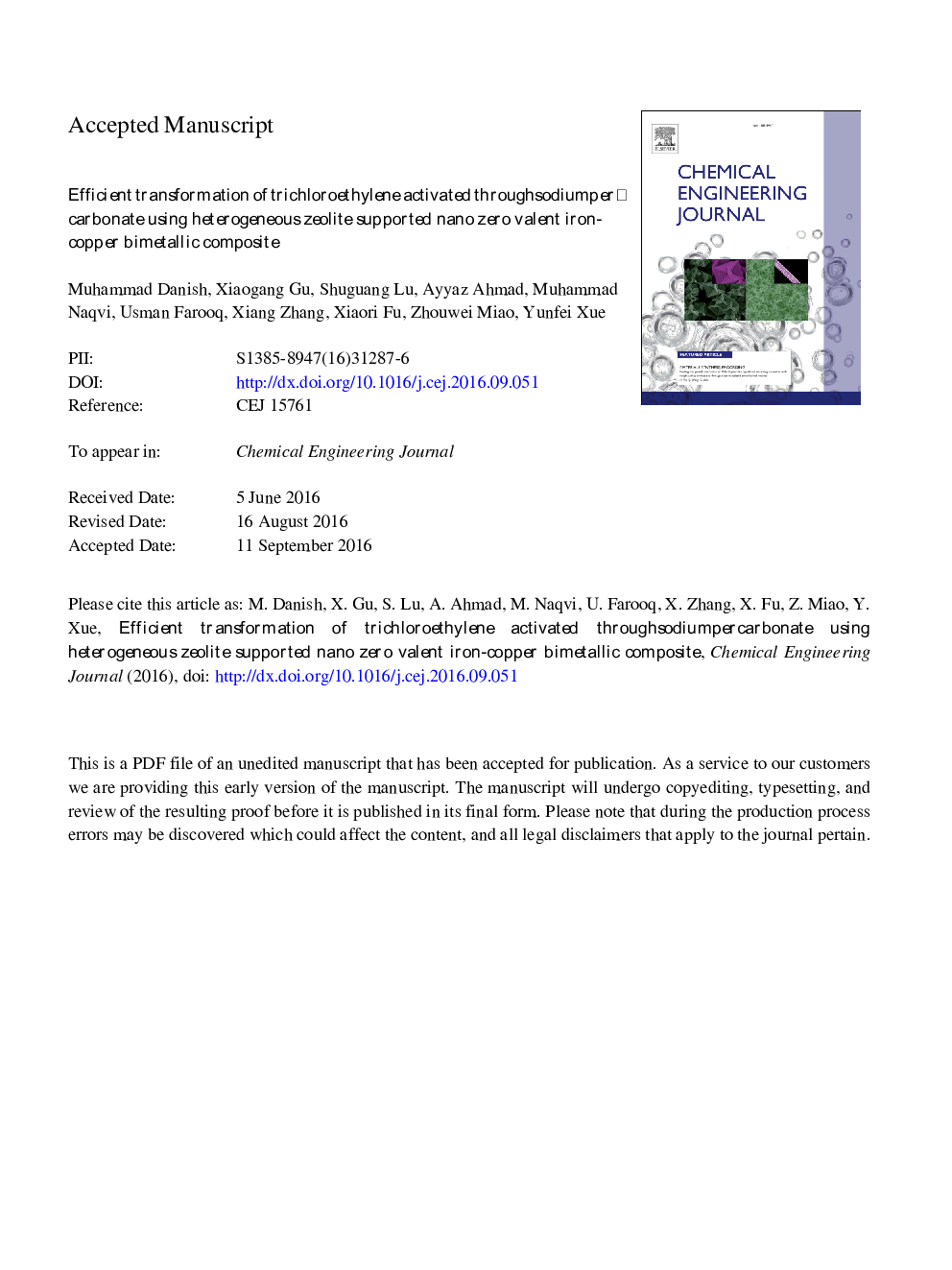| Article ID | Journal | Published Year | Pages | File Type |
|---|---|---|---|---|
| 4763703 | Chemical Engineering Journal | 2017 | 49 Pages |
Abstract
Zeolite supported nano zero valent iron copper bimetallic composite (Z-nZVFe-Cu) was synthesized using an ion exchange method. The morphology and physico-chemical properties of the Z-nZVFe-Cu composite were determined using transmission electron microscopy (TEM), scanning electron microscopy (SEM), Brunauer Emmett Teller (BET), energy dispersive X-ray spectra (EDS), Fourier transform infrared spectroscopy (FTIR) and X-ray diffractometer (XRD). The results showed that iron and copper nano particles were well dispersed on the zeolite sheet. The degradation efficiency of trichloroethylene (TCE) achieved was more than 95% using Z-nZVFe-Cu as a heterogeneous Fenton like catalyst. An efficient removal of total organic carbon (TOC) was promoted as compared to zeolite supported iron nano composite (Z-nZVFe) and unsupported nano iron (nZVFe). Electron spin resonance (ESR) detection confirmed the intensity of hydroxyl radicals (OH) in the system. While benzoic acid (BA), a probe indicator for the quantification of OH, demonstrated the higher intensity of hydroxyl radicals in Z-nZVFe-Cu as compared to Z-nZVFe and nZVFe. The less iron and copper leaching of from Z-nZVFe-Cu presented its higher stability and better catalytic activity, displaying its potential long term applications for TCE degradation in groundwater.
Keywords
Related Topics
Physical Sciences and Engineering
Chemical Engineering
Chemical Engineering (General)
Authors
Muhammad Danish, Xiaogang Gu, Shuguang Lu, Ayyaz Ahmad, Muhammad Naqvi, Usman Farooq, Xiang Zhang, Xiaori Fu, Zhouwei Miao, Yunfei Xue,
